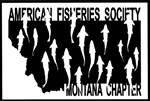Collaboration on the Upper Clark Fork River: a case study from the Montana CREWS project
Abstract
Ecosystem restoration projects are collaborative undertakings and often involve scientists and professionals from varied backgrounds working together across agencies, academia, and the private sector. Successful outcomes are a result of effective collaborative processes, and monitoring how collaboration evolves over the course of a project can provide important insights for management. We present a measurement tool for assessing team collaboration processes and discuss validation and results from a survey of the CREWS project, a large-scale research project in Montana focusing on environmental water quality. We adapted a survey instrument used in the health sciences for relevance to our large interdisciplinary science team and validated our scale for this context. This work is part of a larger project using social network analysis to explore social factors involved in collaborative science and their relationships to project outcomes.
Because this study is still in progress, the recording is not included here.
Collaboration on the Upper Clark Fork River: a case study from the Montana CREWS project
Ecosystem restoration projects are collaborative undertakings and often involve scientists and professionals from varied backgrounds working together across agencies, academia, and the private sector. Successful outcomes are a result of effective collaborative processes, and monitoring how collaboration evolves over the course of a project can provide important insights for management. We present a measurement tool for assessing team collaboration processes and discuss validation and results from a survey of the CREWS project, a large-scale research project in Montana focusing on environmental water quality. We adapted a survey instrument used in the health sciences for relevance to our large interdisciplinary science team and validated our scale for this context. This work is part of a larger project using social network analysis to explore social factors involved in collaborative science and their relationships to project outcomes.
Because this study is still in progress, the recording is not included here.
